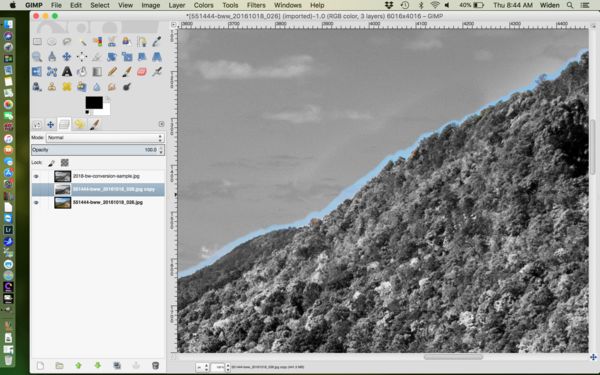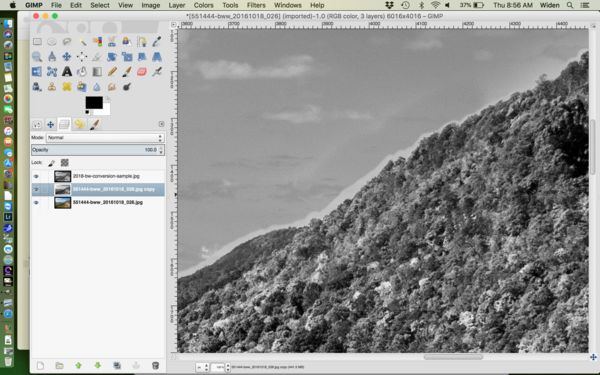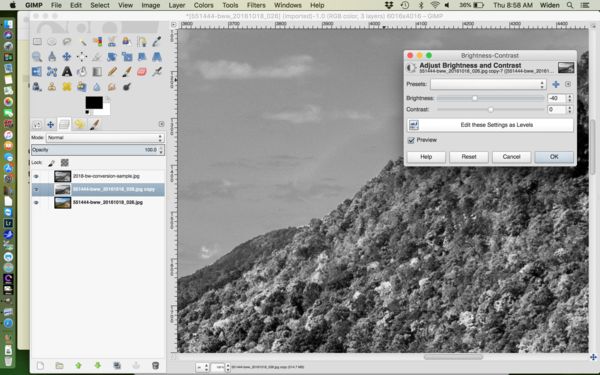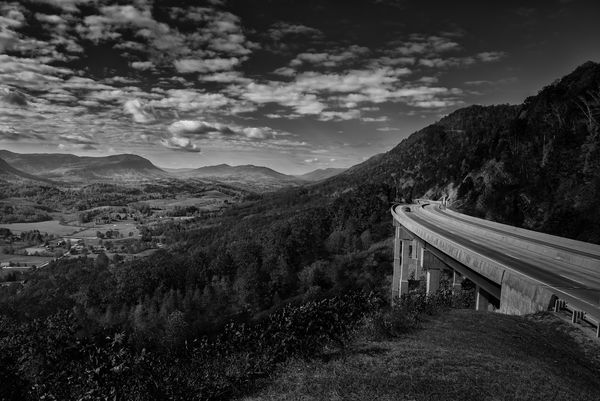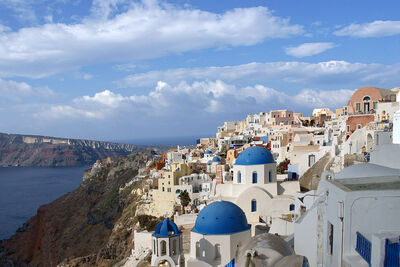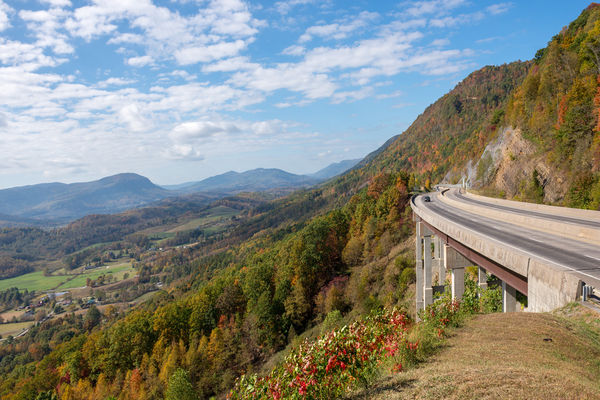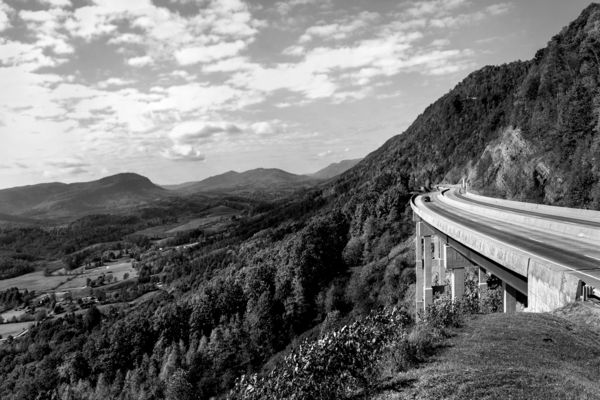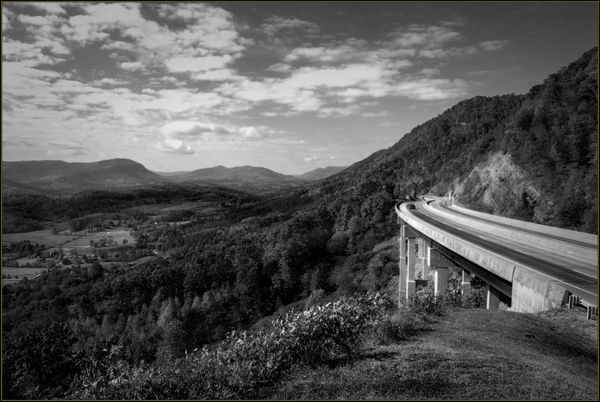Guidance Please - Conversion to B&W
Dec 13, 2018 07:45:03 #
brucewells wrote:
I concur with your statements, but when I darkened the sky, I got a halo on the near mountain, as your edit did. Not to fret!! Your suggestions are viable and I shall explore them in more detail. I truly appreciate your comments.
Thank you. With more post processing work you can get rid of those halos but it can be tedious. Usually I find the appear when you darkening sky by adjusting the blue slider. It is a problem for landscape conversions me
Dec 13, 2018 08:08:12 #
brucewells wrote:
I concur with your statements, but when I darkened the sky, I got a halo on the near mountain, as your edit did. Not to fret!! Your suggestions are viable and I shall explore them in more detail. I truly appreciate your comments.
I should note that in many landscapes you naturally get variation in the blue tones of the sky both horizontal and vertical, as seen in your color photo. To my taste, they often look poor, or even unnatural, in a black and white conversion. A portion of the sky loses some definition that is perceptable in the color shot. If the shot was taken with a circular polarizer, particularly with a wide angle lens, this variation in the sky might be accentuated. It can be hard to use a graduated filter to good effect when the sky meets the land in an uneven way and not a straight line to reduce the variation in the sky. If you can avoid the problems of the circular polarizer, it often can darken a sky and make the shot a better candidate for conversion. This might be done using a 50mm lens and stiching rather than starting with a 15mm, 20mm or 24mm lens as the polarizer is less likely to cause a problem with a normal lens.
Dec 13, 2018 09:06:01 #
whwiden wrote:
Thank you. With more post processing work you can get rid of those halos but it can be tedious. Usually I find the appear when you darkening sky by adjusting the blue slider. It is a problem for landscape conversions me
One way to get rid of halos is to set up a number of layers. The bottom layer is the original color photo. The top layer is the conversion to B&W which you like for the foreground, but which has the halos in the sky. Duplicate the bottom color layer, put it between the two and desaturate it. Use an eraser tool to erase the top layer with the halo which will show through as color if you set your editor to look through the intermediate layer. Then you view the intermediate layer. You will see a definite line in the sky where the gray scale does not match. Use a brightness tool to change the brightness of the grayscale to match the color of the sky in the top layer. You can then merge the layers when you are done to create the single file which you want to use. When you create the layers, you may need to add something called an "alpha" channel to let you erase and look through layers. If the gray scale of the sky you like varies, you may need to use several intermediate layers to get the look that you want.
Though many adjustments can be made, if you plan for a conversion up front, it still helps to get the file that you start with as close as you can to keep computer adjustments to a minimum.
Dec 13, 2018 10:07:17 #
Kozan
Loc: Trenton Tennessee
brucewells wrote:
I would truly appreciate your critique of the following image. I've been intrigued by B&W and have set my hand at it. I know there are many of you who have done this work and know much more about it than I, and in that vein, I'm asking if I'm "getting it" and going the right direction with it. All comments appreciated.
This scene was taken near Norton, VA, along Hwy 23 a couple years ago.
Thank you in advance!!
This scene was taken near Norton, VA, along Hwy 23 a couple years ago.
Thank you in advance!!
You need to adjust the individual colors separately. R, G, B and their opposites Cyan, Magenta, and Yellow. That way you can adjust the lightness or darkness of each color. For instance, the green grass can be lightened just by using the Green slider.
You do not want to use the saturation slider. That adjusts all colors at the same time. Don't use it.
Every piece of software is different. I use Affinity Photo now and when you do a B & W conversion, a panel pops up allowing you to use the color sliders.
Good luck. And Google is your friend.
Kozan
Dec 13, 2018 10:29:11 #
whwiden wrote:
One way to get rid of halos is to set up a number ... (show quote)
Thank you so much for this excellent idea. So glad I started this thread.
Dec 13, 2018 10:30:17 #
Kozan wrote:
You need to adjust the individual colors separatel... (show quote)
Thank you, Kozan. Great insight.
Dec 13, 2018 11:33:59 #
brucewells wrote:
I would truly appreciate your critique of the following image. I've been intrigued by B&W and have set my hand at it. I know there are many of you who have done this work and know much more about it than I, and in that vein, I'm asking if I'm "getting it" and going the right direction with it. All comments appreciated.
This scene was taken near Norton, VA, along Hwy 23 a couple years ago.
Thank you in advance!!
This scene was taken near Norton, VA, along Hwy 23 a couple years ago.
Thank you in advance!!
I made some adjustments, but have decided to do some more reading/experimenting before going forward, likely with a more conducive image. I truly appreciate everyone's time for helping with this. Thank you much!!
Dec 13, 2018 14:24:30 #
First thing I did was to correct the horizon and make the road look level (See Countryside C). Then it was converted to black in white in Photoshop and the contrast was altered using Levels and, doing some selective burning and dodging. Problem is the clouds. Blown out, and very hard to reconstruct to look natural. I ran the Blur/Darken brush over them but the results are not quite what I would like. Fun trying!
Dec 13, 2018 14:31:49 #
Dec 13, 2018 17:13:33 #
rborud
Loc: Minnesota
brucewells wrote:
I would truly appreciate your critique of the following image. I've been intrigued by B&W and have set my hand at it. I know there are many of you who have done this work and know much more about it than I, and in that vein, I'm asking if I'm "getting it" and going the right direction with it. All comments appreciated.
This scene was taken near Norton, VA, along Hwy 23 a couple years ago.
Thank you in advance!!
This scene was taken near Norton, VA, along Hwy 23 a couple years ago.
Thank you in advance!!
brucewells here is a B&W execution with a lot of hand brush work which I tend to use when I make a change to B&W. RBorud
Dec 13, 2018 20:13:23 #
Some great experimentation going on here. UHH at its best - Very educational and enlightening.
Andy
Andy
Dec 13, 2018 20:55:48 #
AndyH wrote:
Some great experimentation going on here. UHH at its best - Very educational and enlightening.
Andy
Andy

Dec 14, 2018 00:33:29 #
I am completely amazed at the amount of good advice given on this topic! Like Bruce, I think this is the next on my list as far as post processing. I think I will try to get some ready for the West TN Fair in late summer. They have a pretty good show there. Very interesting thread
And Bruce, when you get this figured out, come on down to West TN and teach me!!!!
And Bruce, when you get this figured out, come on down to West TN and teach me!!!!
Dec 14, 2018 09:42:40 #
SonyA580 wrote:
First thing I did was to correct the horizon and make the road look level (See Countryside C). Then it was converted to black in white in Photoshop and the contrast was altered using Levels and, doing some selective burning and dodging. Problem is the clouds. Blown out, and very hard to reconstruct to look natural. I ran the Blur/Darken brush over them but the results are not quite what I would like. Fun trying!
I truly appreciate your efforts, but the road was not level across the bridge. It had a slight cant to it. But, yes, it is fun. I certainly enjoy working with the image.
Dec 14, 2018 09:45:04 #
Delderby wrote:
It might be interesting to shoot a few pics with your camera set to B&W.
Based on what I've read, it is best to shoot in color then convert in post processing. Even though the end result is B&W, the color data in the image gives much more latitude for adjustment in post.
If you want to reply, then register here. Registration is free and your account is created instantly, so you can post right away.
